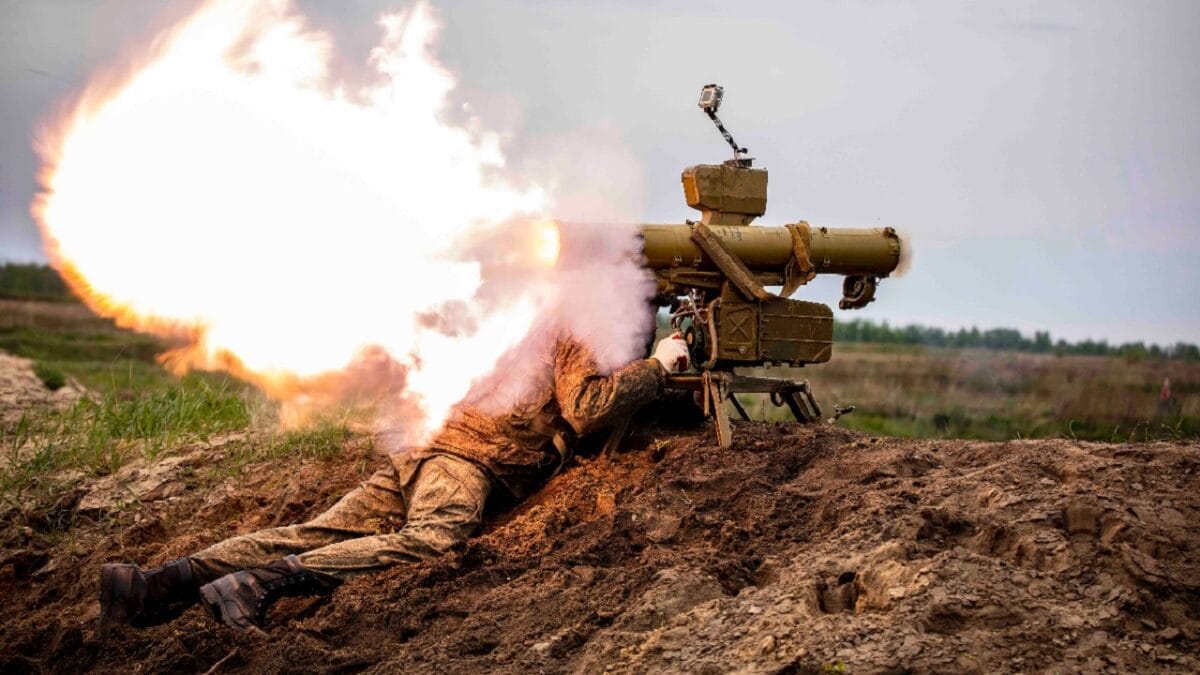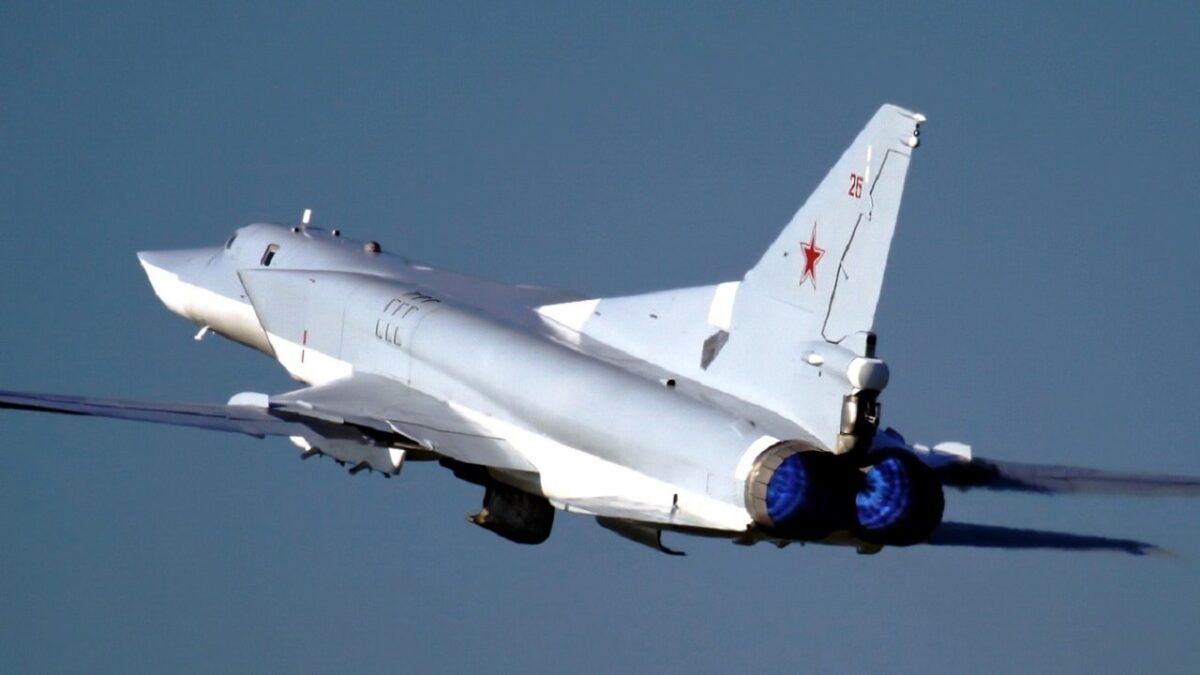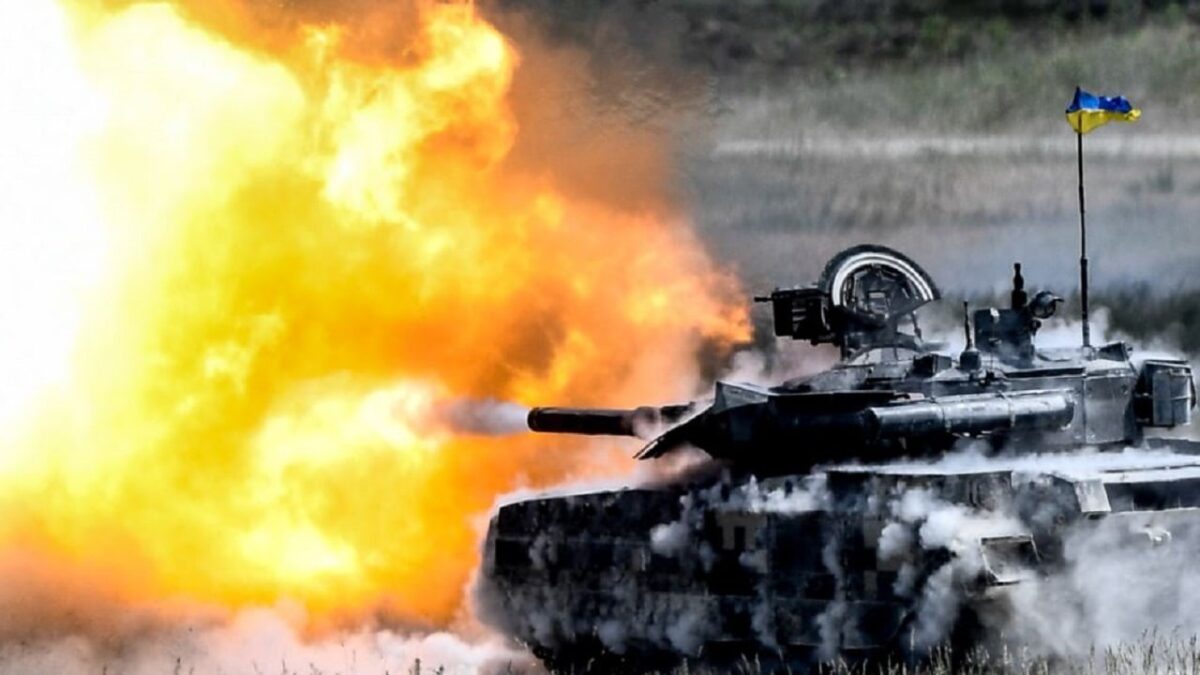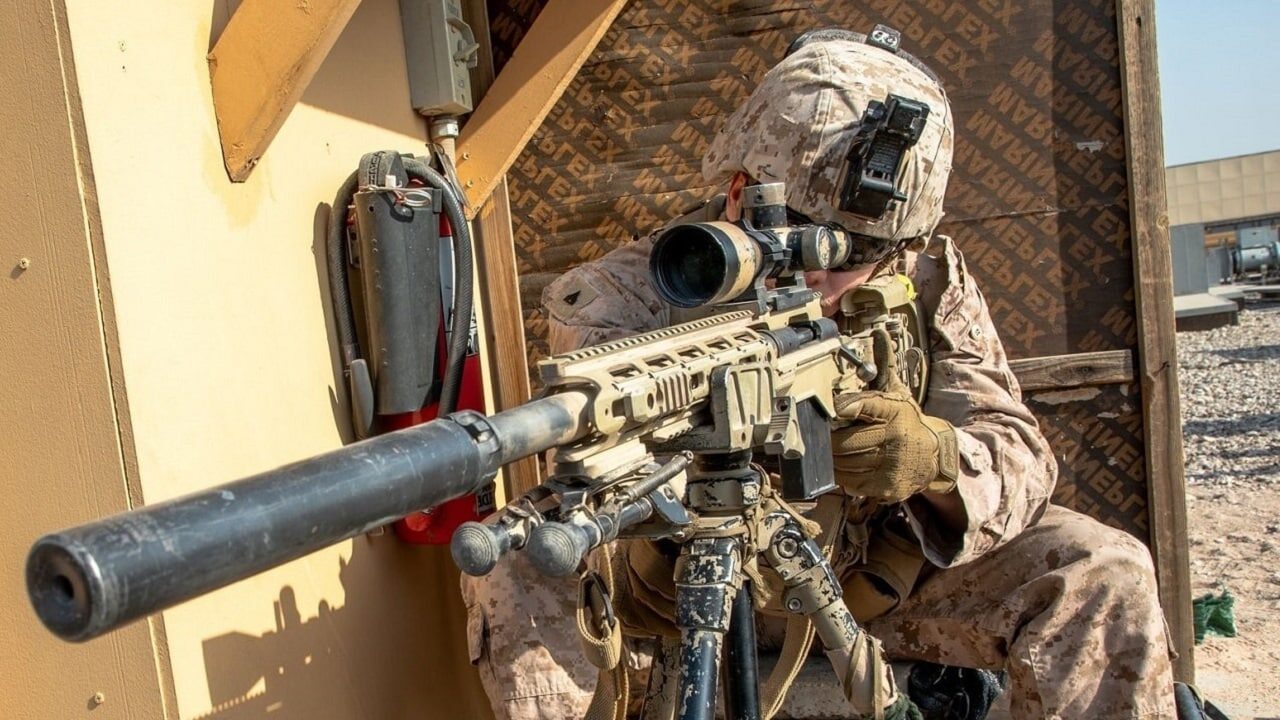Ukraine’s Desire to Drive Russia from its Soil is Understandable – but Geography & Combat Realities Will Extract a Steep Price if Kyiv Tries – Ukrainians have been appropriately encouraged by the impressive tactical defeat President Volodymyr Zelensky’s defenders inflicted on Putin’s initial invasion and their staunch defense to date in the Donbas. The U.S. and NATO countries have been sending Kyiv massive amounts of arms and ammunition, and now increasingly sophisticated heavy weapons, leading some to hope the Ukraine Armed Forces (UAF) will soon transition from defense to offense and drive Russia from Ukrainian soil.
While that hope is entirely understandable, moving from offense to defense in wartime is far more complex than appears on the surface, and will take much longer than many realize.
If Zelensky’s troops try to rush the transition and move too quickly to the offensive, the results could be catastrophic. But policymakers in both Kyiv and Western capitals need to understand even in the best case, geography and combat realities will impose a hefty price tag on attempting to switch to the offensive – and will not offer anything close to a guarantee of success, regardless of the cost or timeframe.
It may seem simple to go from defense to offense. Many conclude that if the West provides the Ukrainian army with a sufficient number of new tanks, artillery pieces, and long-range air defense missiles, Ukraine can then move to the offense and drive Russia from Ukrainian territory. The logic seems reasonable: if the UAF successfully repulsed Russian armor north of Kyiv and has thus far resisted Moscow’s attacks in the Donbas, Ukrainian troops are obviously better, and thus with enough new kit, they can be just as successful on the offensive.
Unfortunately, there are factors at play that make that transition far more complex than appears.
Why Ukraine Successfully Repelled Russia’s Initial Attacks
It is essential to understand the fundamental reasons why Russia’s initial attacks north of Kyiv failed and why there haven’t been any breakthroughs so far in the Battle of the Donbas.
Putin’s first mistake was at the strategic level when he split his limited forces into four axes of advance instead of massing his combat power on one decisive objective. Especially in the Kyiv axis, that meant Russia had insufficient force to wage the urban fight.
However, possibly more important, is that fighting in the constrained environment of a city gives nearly all the advantages to the defenders. UAF troops could fight from high-rise buildings, firing down with anti-tank missiles from above, where tank gunners may not be able to elevate their guns to return fire. The defenders could sneak up on Russian armored vehicles from near point-blank range, around buildings, hitting the enemy in its vulnerable rear or flanks. One of the advantages of armored firepower is that gunners can accurately engage targets upwards of two miles away – but in urban terrain, they can only fire as far as they can see, which could be less than 100 yards.
In the Battle of Donbas, the defenders again have significant advantages. Ukraine has spent eight years constructing an elaborate series of reinforced bunkers, trench lines that protect fighters from direct fire of Russian weapons, minefields that constrict armored movement, pre-sited artillery targets on kill zones, and mutually reinforcing defensive positions many miles in depth. As with the fight in Kyiv, Russian troops have to contend with these many Ukrainian advantages, and since the initial thrusts into the country, Russian troops have not succeeded in making significant breakthroughs.
What Ukraine Hopes to Accomplish in Donbas
Right now the UAF is trying to hold its ground in the Donbas, prevent any penetration of the lines by Russian armor, and extract maximum price in blood on every Russian attempt at attacking the Ukrainian positions. Kyiv’s first objective is to ground the Russian attack to a standstill, deprive it of its striking power, and degenerate the offensive into a stalemate. Before any offensive can even be contemplated, Ukraine first has to sap Russian offensive strength.
Once the threat of Russian penetration of the Ukrainian lines has been contained, Zelensky’s forces must create new combat units that can go on the offensive in the future. His current troops are already stretched thin and if they successfully turn the Donbas into a stalemate, Ukraine’s troops will be a spent force.
The UAF is already taking daily casualties from relentless Russian shelling, and if this continues for months, the psychological toll it will take on the force will not be minor. So to have a chance at going on the offensive, Ukraine will have to form new mechanized formations.
What it Takes to Create a New, Offensive Force
To have a viable chance at driving Russian troops from their territory, Ukraine will need to field at least 75 battalion tactical groups (BTGs). Those have to be built from scratch, and that includes every aspect of an organization, from the tanks, armored personnel carriers, artillery, motors, logistics trucks, medical supplies, headquarters elements, communications gear, and large quantities of ammunition, fuel, food, and water.
That will require a minimum of 60,000 new soldiers to man the 75 BTGs, plus another 20,000 to 30,000 for infantry and replacements. It will also require the West to provide all necessary kit, vehicles, spare parts, and sustainment for the gear. Then the Ukrainian soldiers will need to be trained, somewhere in the Western part of Ukraine where they are safe from attack. The training will start at the individual trooper level in basic combat skills.
With @CNN's @biannagolodryga & @jillrussia examining latest in #RussiaUkraineWar developments, Mariupol & Azovstal situation + US intel help to Kyiv. @defpriorities https://t.co/SOS13z3R90
— Daniel L. Davis (@DanielLDavis1) May 6, 2022
Then the soldier will have to train on his specific job (whether tank driver, artillery gunner, or missile system operator, for example), followed by crew training, platoon operations, company-level training, and finally at the BTG level, where all aspects of combined arms training must be learned.
This process can’t be shortchanged or minimized, if the UAF hopes to be able to win. And that training will take time. Probably six to nine months of intensive training (otherwise they would need a minimum of a year). At this point, the UAF command in Kyiv will be in a position to start planning an offensive. To consider what chances this new formation would have, however, we must also consider what the enemy would be doing during these six to nine months.

Russian anti-tank weapon. Image Credit: Creative Commons.
Russia’s Likely Counter-Preparation
During the same period as the UAF were forming units and training them, Russia will have switched from the offensive to the defensive. They will have brought up engineer support, started digging defensive positions, building fortifications and barriers, tank traps, and other activities designed to impede offense operations. They too will be bringing up additional reserves to backfill combat losses and would be training their own units, including how to conduct defensive mobile warfare.
Once Ukrainian forces had developed sufficient offensive capacity, then they then be in a position to finally launch their offensive. Here, however, the Ukrainian command authority would have to deal with a completely new set of difficulties. Up to this point in the war, the Ukraine side has had the inherent advantages of fighting from terrain that favors the defender. However, going to the offensive will mean abandoning those advantages and incurring the risk imposed on the attacking force.
The UAF would have to leave the defensive positions that have protected them so well since the war’s start, and move into the open. They would then be just as vulnerable as the Russians were in their February attack. As challenging, the Russians would have had many months to build defensive works, rehearse counter-attack routes in-depth of its frontlines, bring up newly trained crews of their own, and would no doubt have stockpiled war stocks of all classes of supplies to allow them to fight for a long time.
Additional Challenges Ukraine Would Have to Mitigate
Compounding Ukraine’s task is that, unlike Russia’s February assault, the UAF will be attacking with largely new, inexperienced troops – and it will have suffered potentially 40,000 or more casualties (Kyiv doesn’t publish any friendly casualty figures, but a fair assumption is that Ukrainian losses are close to Russian casualty numbers).
Also, having to equip its BTGs with gear given by the West, Ukraine will have a tough time maintaining the various kit, as some would be from British sources, others from American, German, Polish, and other contributing countries – each bit of kit needing unique supply chains, specific types of spare parts, replacement engines (a common requirement in armored ops), different ammunition types, and mechanics skilled in repairing the various types of vehicles. That hodge-podge of equipment and logistical requirements imposes a far larger burden on the Ukrainian forces than is commonly realized.
Unless there are major changes in the disposition of the two sides six to nine months from now, Russia will still be at full strength with its air defense capacity while Ukraine will be operating in a degraded (but still capable) state. The Russian air force will still be able to engage from long range, out of danger from most of the Stinger Missiles NATO has provided Ukraine, and Russia will still have an advantage – possibly a major advantage – in rocket and heavy artillery systems. What would that mean, then, for Ukraine’s chances in the offensive next year?

Russian Air Force Tu-22M2M fighter-bomber.
Likely Outcomes of Future Ukraine Offensive
Ukraine’s chances to create a successful new offensive capacity, from scratch, during wartime while concurrently defending against a grinding Russian offensive in the east, is not high. It normally takes years to produce a quality offensive force, under peacetime, without external pressures. Trying to form such a force in months, under the worst conditions imaginable, is incredibly difficult.
Once that force is formed, however, it will have to engage in an offensive operation against an enemy that will have had months to prepare defensive positions, Ukraine will be attacking when its air force is weak, against a still-potent Russian air force, and with limited Ukrainian air defense capacity. The chances of this formation successfully driving out the Russian army, which presently controls hundreds of square kilometers of Ukrainian territory, is alarmingly low.
Though Ukrainian courage and willingness to fight is legendary and beyond question, in all likelihood, if Kyiv chose to form this new offensive force and launches a new operation to expel Russia, the Ukrainian troops will suffer egregious setbacks, likely make limited territorial reconquest, and in the end degenerate into another stalemate.
In the meantime, the Ukrainian people will continue to suffer egregious military and civilian casualties, its cities will continue to be turned to rubble, and its economy will remain shattered. The war would then continue, likely years, as the cycle would repeat, where it would be Russia who would attempt to rebuild an offensive capacity and renew its attack years from now.
Conclusion
I completely understand the desire of the Ukrainian people to expel every single Russian soldier from its territory; in their place, I would certainly have the same passion. But an objective analysis of the Ukrainian geography and just basic combat realities reveals that the chances of success for Ukraine are minimal while the chances of failure are high. Kyiv authorities would be wise to consider alternatives to continuing the fight, however unpalatable that may be.
In all probability, neither Zelensky nor Putin will engage in genuine negotiations to end the fighting until the Battle of Donbas plays out. If Russia eventually surrounds and destroys the UAF battle force in the Donbas, Putin will have significantly improved negotiating leverage. If Zelensky’s forces are able to bleed Russia’s offensive energy dry and produce a stalemate in the Donbas, then Kyiv’s negotiating leverage will increase significantly.

Ukrainian tank firing. Image Credit: Creative Commons.
But the hard truth is that there is no rational basis to hope for a military victory by the Ukrainian side. The cost to try would be high and egregious, and Kyiv would be forced to reach some deal it doesn’t like in the future, but at a much higher cost than will be the case post-Donbas (which itself will be a higher price than the deal that could have been reached before the conflict). The most logical, reasonable course would be for Kyiv to negotiate in earnest with Moscow and get the best deal they can to end the war.
Finally, I openly concede that this conclusion is one that is much easier for me to reach than any leader or citizen in Ukraine. The intensity of their hatred for their invading enemy is something I can only imagine, and their desire to be free of Russia is beyond righteous.
In the end, the people of Ukraine have to decide what course of action to pursue, even if it means trying to do something with a low chance of success and a high cost of failure. I hate that they are forced to make such a dreadful choice.
Now a 1945 Contributing Editor, Daniel L. Davis is a Senior Fellow for Defense Priorities and a former Lt. Col. in the U.S. Army who deployed into combat zones four times. He is the author of “The Eleventh Hour in 2020 America.” Follow him @DanielLDavis1.

